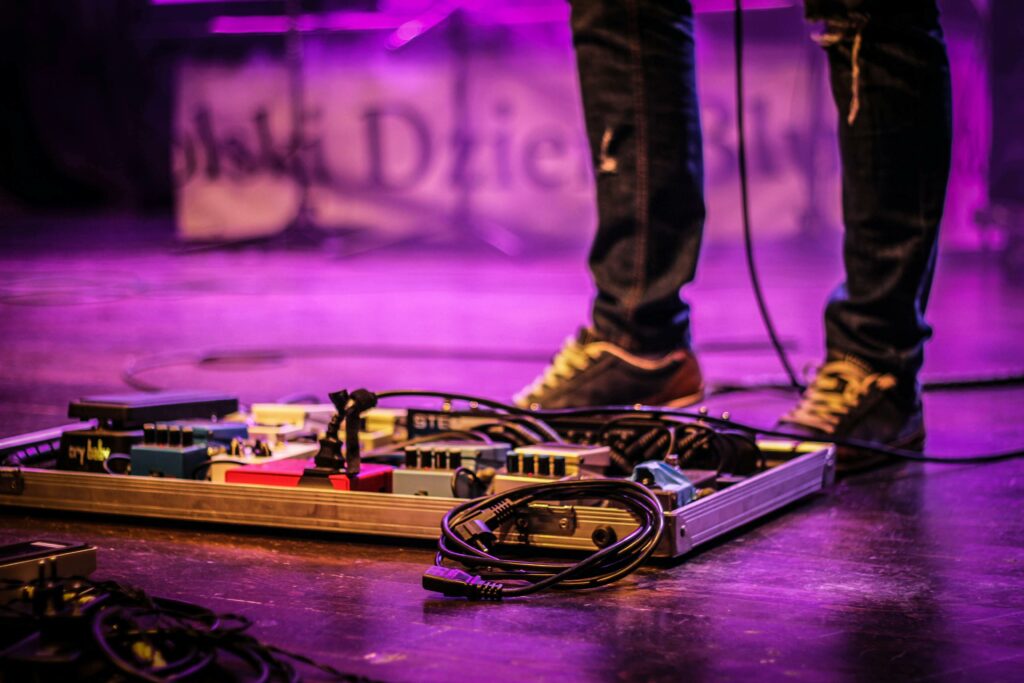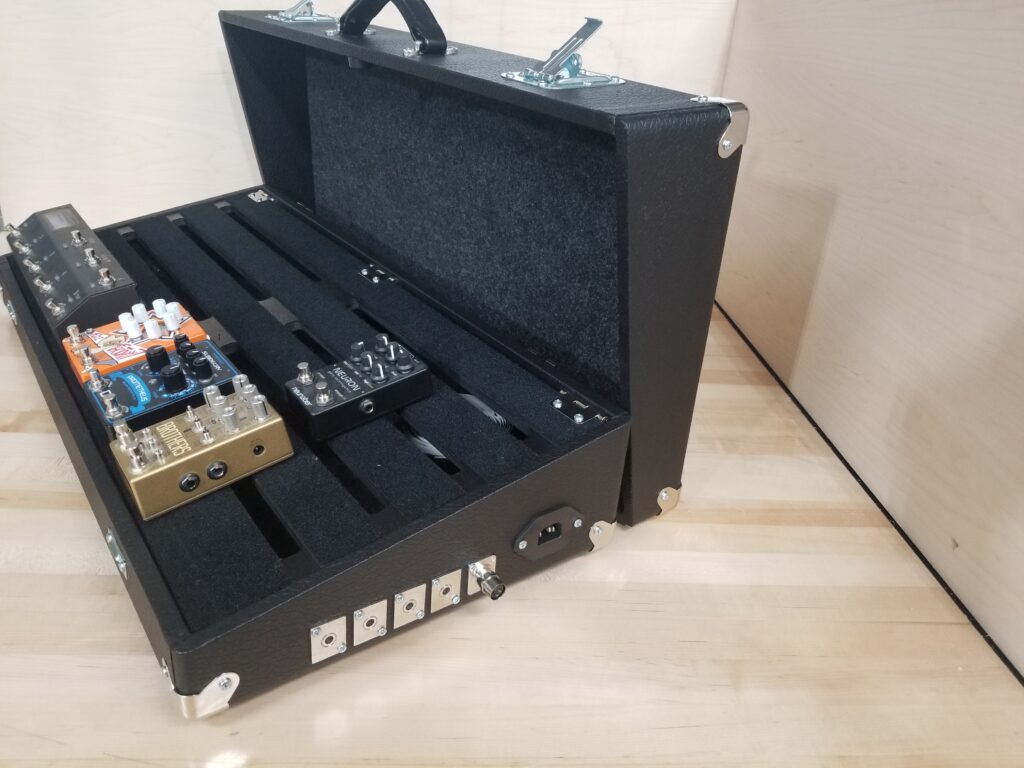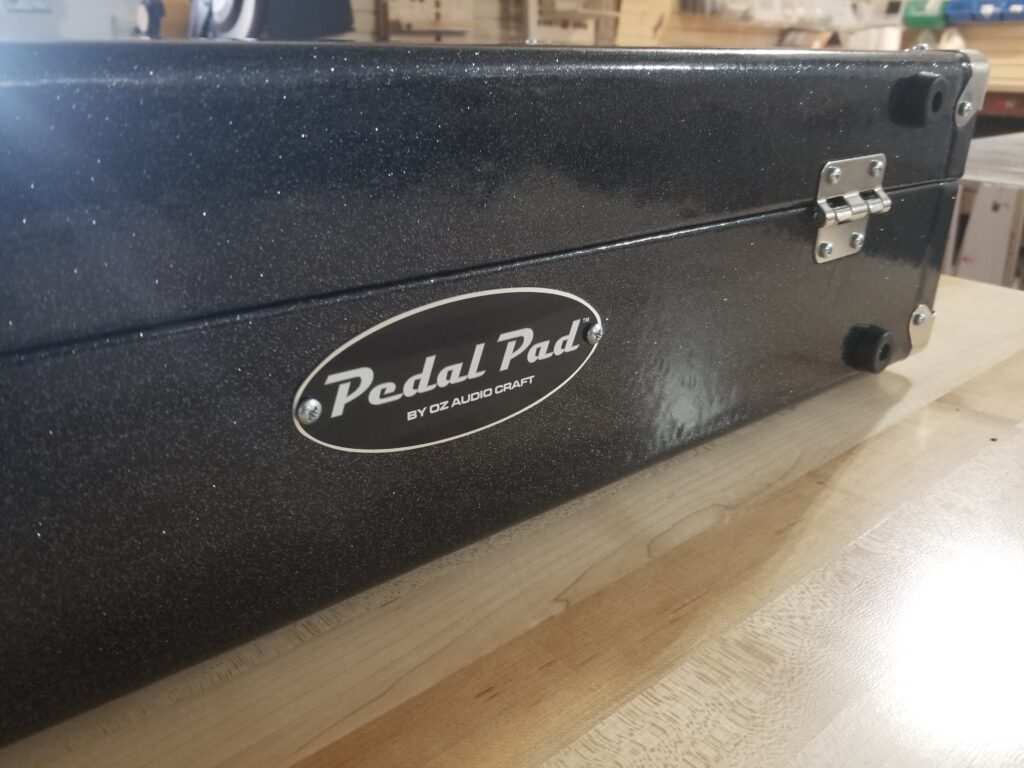
Building a pedal board is so much more than just selecting your favorite pedals and attaching them to a board. All those pedals need a power source, and with so many different factors to consider and so many options available, it can be difficult to decide which ones truly are the best pedal board power solutions for you.
Figuring out how to power a pedal board can be a big challenge for both beginners and experts alike, but it doesn’t have to be that way. So, what do you need to consider when choosing a power source, and how do you know which pedal board power solutions will work best for you?
While you’re probably quite used to plugging your electronics into the wall to power them, powering a pedal board is a bit more complicated. Every guitar player’s board is a bit different, so you can’t just go out and pick up the first power supply you see.
In fact, from simple things like your budget to more complicated ones like the requirements of your specific pedals, there’s a lot to consider. So, before you go out and buy a power supply, here is everything you need to think about beforehand.
Every pedal you use will need to be hooked up to a power source, and, in general, the more pedals you have, the more power you’ll need. For example, if you only plan on powering a few small pedals, a daisy chain might do just fine.
However, if you have more than a few pedals to power, you’re probably better off with a dedicated power brick. You’ll just have to make sure that the power brick you choose has enough outlets and provides sufficient power.
Every effects pedal is different, but there are some things that the majority of pedals have in common. Most pedals require an amperage of 100mA and are either 9v, 12v, 18v, or 24v. That being said, there are still many exceptions to these rules, and if you have a pedal that doesn’t fit these parameters, you’ll need to make sure that you find a power source that can accommodate them.
The vast majority of effects pedals use DC power. So, naturally, most power supplies are designed to take in AC power from the outlet which it then converts to DC in order to power the pedals.
However, again, there are exceptions to this rule. AC-powered pedals do exist, and if you have one, you’ll need to make sure that the power supply you choose has an AC courtesy outlet to power it. Accessories like Pedal Pad’s IEC inlet with lighted switch and 2 female AC outlets is also a good alternative.
When it comes to powering your board, you essentially have two options to choose from. Both have their benefits and drawbacks, but if you want to ensure you choose the right one for you, you’ll need to understand both.

Daisy chains are popular with beginners and guitar players who only need to power a few pedals because they are simple and easy to set up. Basically, all you need to do is get a DC power adapter that you can plug into the wall and then create a daisy chain with connector cables that you can use to power all your pedals. However, this option does have its limits.
The most popular plug-in adapters are usually only compatible with 9v pedals, which restricts the types of pedals you can use. Daisy chains can also be problematic the longer the chain gets because power is sent from the outlet down the chain. If it’s too long, the pedals at the end might not be able to reliably get the power they need.
In most cases, it’s best to power your board with a dedicated power brick. These types of power supplies are much better at providing equal and reliable power to larger numbers of pedals at the same time. They’re also generally much more versatile and can often power pedals that require more than 9v and 100 mA, allowing you to incorporate a much wider variety of pedals into your rig.
Power bricks are also great because their often compact size makes it easy to mount them on or under the board itself, which can make setting up and tearing down your rig much quicker and easier.
Integrating your pedal’s power supply into your board is one thing, but sometimes, your board needs to power more than just pedals. Laptops and tablets are becoming an increasingly common sight on stage, and if you need to power one of these devices, there’s no reason not to integrate this functionality into your board.
There are plenty of DIY ways to do this. However, with affordable and easy-to-install accessories like Pedal Pad’s Recessed Power Strip with 2 USBs, powering your pedals and your USB devices through your board at the same time has never been easier.
Whether you want to play without plugging in or want backup power in case something comes unplugged while you’re playing, there are plenty of options when it comes to backup power.
Some power bricks actually come equipped with backup batteries inside. However, if you don’t have one of these power bricks, you can also use any other type of rechargeable battery to provide backup power with enough creativity and the right accessories.

Are you looking for a pedal board that you can customize to meet all your power supply needs? Give Pedal Pad a call! Their team of talented board builders is always happy to answer questions and can help you design a board that meets your exact specifications. So, don’t worry about struggling to find the right pedal board power solutions when you don’t have to. Contact Pedal Pad and start designing your new dream board today!